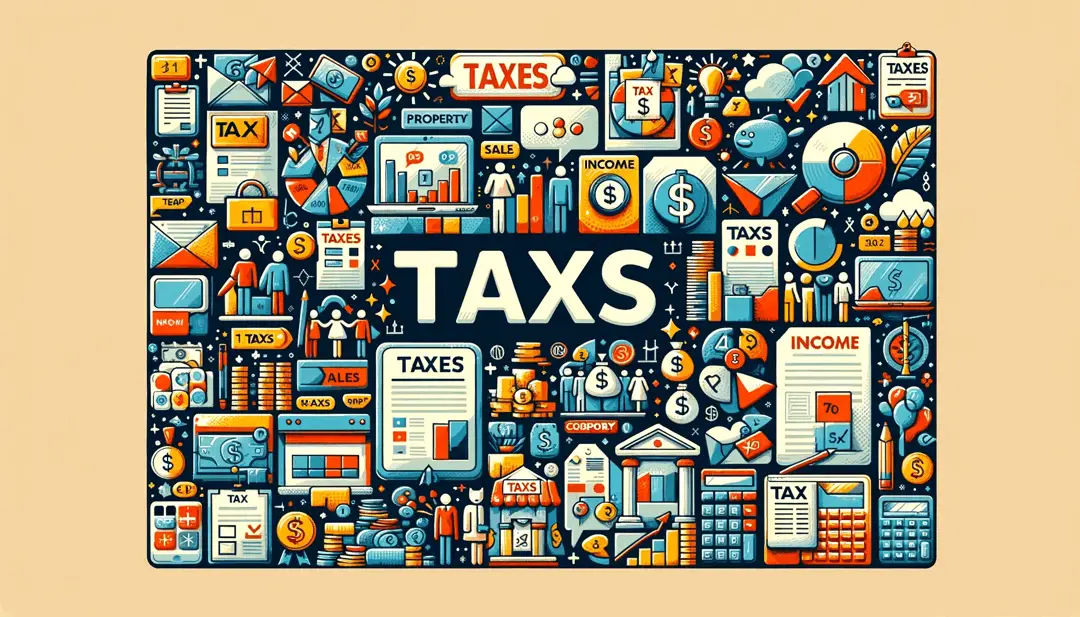Types of taxes: Today there are different types of taxes for every activity
In the conditions of market relations, the tax system is one of the most important economic regulators, the basis of the financial and credit mechanism of state regulation of the economy.
The effective functioning of the entire national economy depends on how well the taxation system is built.
Types of tax system
There are two types of tax system: partial and global.
In a partial tax system, all income received by the taxpayer is divided into parts. Each of these parts is taxed in a specific way. Different parts may be subject to different rates, exemptions and other tax elements listed above.
In the global tax system, all income of individuals and legal entities is taxed equally. Such a system facilitates the calculation of taxes and simplifies the planning of financial results for entrepreneurs. The global tax system is widely applied in the Western States.
Direct and indirect taxes
- Direct - taxes on income and property:
- income tax and corporation tax;
- to social insurance and to the payroll and labor force;
- property taxes, including taxes on property, including land and other real estate;
- tax on the transfer of profits and capital abroad and others. They are levied on a specific individual or legal entity.
Indirect - taxes on goods and services:
- turnover tax - replaced by value added tax in most developed countries;
- excises (taxes directly included in the price of goods or services);
- for an inheritance;
- for transactions with real estate and securities and others. They are partially or completely transferred to the price of a product or service.
Direct taxes are difficult to pass on to the consumer. Of these, it is easiest to deal with taxes on land and other real estate: they are included in rent and rent, the price of agricultural products.
Indirect taxes are passed on to the final consumer depending on the degree of elasticity of demand for goods and services subject to these taxes. The less elastic the demand, the more of the tax is passed on to the consumer. The less elastic the supply, the smaller part of the tax is shifted to the consumer, and the larger part is paid from profits. In the long run, the elasticity of supply increases, and an increasing share of indirect taxes is passed on to the consumer.
In the case of high elasticity of demand, an increase in indirect taxes can lead to a reduction in consumption, and in case of high elasticity of supply, to a reduction in net income, which will cause a reduction in capital investment or the flow of capital into other areas of activity.
Mastering Digital Finance:A Comprehensive Guide
Empower Your Financial Future: Grab Your Copy of 'Mastering Digital Finance' eBook and Navigate the Complexities of Modern Financial Landscapes with Confidence!
Get your eBook
The method of levying the tax, the term and amount of payment should be clearly defined in order to make it convenient to pay, so that it is easy, and the method of calculating it allows everyone to make calculations on their own, without resorting to the help of those who have a special education. In any case, these requirements apply to direct taxes related to the payer's income.
Unlike direct taxes, indirect taxes are not related to the amount of income or the value of property of taxpayers.
There are three types of indirect taxes:
- Excises. Excises are levied on mass-produced goods (alcoholic beverages, salt, sugar, tobacco, matches, etc.), as well as various public utilities, transport, cultural and other services that are widely used (telephone, transportation, air and railway tickets).
- Fiscal monopoly taxes. Fiscal monopoly taxes replenish the treasury by indirectly taxing consumer goods, the production and sale of which are monopolized by the state (since Peter the Great, there has been a monopoly on the production of alcoholic beverages, almost always the object of the monopoly was the production and sale of products made from furs and gold).
- Customs duties. These are indirect taxes on import, export and transit goods, i.e. crossing country borders. Paid by all those who carry out foreign trade operations.
Customs duties are divided into:
- fiscal customs duties - for the growth of budget funds;
- protective - protect the domestic market from the penetration of imported goods;
- anti-dumping - protect the domestic market from junk exports;
- preferential - are established for any particular type of product in the import of which the country is interested.
Types of taxes by impact
Governments have to apply taxes of varying impact, because the funds taken in the form of taxes from the poor, whose incomes are already small, are a greater victim than those taken from the rich. At the same time, this does not mean at all that the rich pay more to the budget with pleasure, without grumbling. These taxes can be roughly divided into three groups:
- Progressive - a tax that increases faster than income increases. This situation arises in cases where there are several scales of tax rates for different incomes. Then we are talking about the marginal tax rate. It is equal to the increase in taxes paid divided by the increase in income (expressed as a percentage). Thus, the real tax burden for persons receiving higher incomes is less than the marginal tax rate in the last scale. This is because amounts in the previous scales are taxed at a lower rate. Consequently, rising marginal tax rates constrain the growth of averages. This is the nature of a progressive tax.
- Regressive - a tax that increases more slowly than income. It is characterized by charging a higher percentage on low incomes and a lower percentage on high incomes.
- Proportional - a tax that takes the same part of any income (single rate for income of any size).
The Importance of Tax Policy
Taxation is the only practical means of generating revenue to fund government spending on the goods and services that most of us need. However, creating an efficient and fair tax system is by no means an easy task, especially for developing countries seeking greater integration into the international economy. The ideal tax system in these countries should provide the necessary revenues while avoiding excessive government borrowing, and this should be done without reducing economic activity and without deviating too much from tax systems in other countries.

Freelancer, author, website creator, and SEO expert, Elena is also a tax specialist. She aims at making quality information available to the most, to help them improve both their personal and professional lives.She writes tax related articles on her specialised publication: Tax Taxation.
Mastering Digital Finance:A Comprehensive Guide
Empower Your Financial Future: Grab Your Copy of 'Mastering Digital Finance' eBook and Navigate the Complexities of Modern Financial Landscapes with Confidence!
Get your eBook

